Digital Poster
Flow
ISMRM & ISMRT Annual Meeting & Exhibition • 10-15 May 2025 • Honolulu, Hawai'i

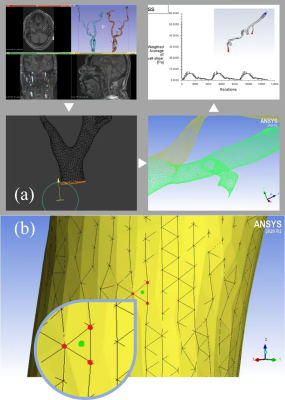 |
Computer Number: 1
3502. Comprehensive
CFD Analysis of Hemodynamic Patterns in Atherosclerosis:
Implications of ICA Stenosis Severity on Head and Neck Dynamics
Y. Wu, J. Ding, S. Xia, Y. Guo
Nankai University, Tianjin, China
Impact: The proposed CFD-based approach identifies
hemodynamic patterns linked to AS risk and progression,
offering insights into how ICA stenosis severity impacts
head and neck hemodynamics, guiding clinicians in patient
assessment and management.
|
|
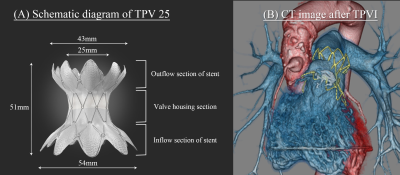 |
Computer Number: 2
3503. Wall
Shear Stress and pulmonary regurgitation before and after TPVI
for repaired tetralogy of Fallot: 4D flow MRI assessement.
H. MORI, M. NAGAO, M. Jinzaki, H. Hamano
Keio University School of Medicine, Tokyo, Japan
Impact: 4D Flow MRI can assess early diastolic WSS
derived from pulmonary regurgitation in repaired-Tetralogy
of Fallot before TPVI, potentially serving as a new
biomarker for predicting worsening of pulmonary
regurgitation and considering TPVI indications.
|
|
 |
Computer Number: 3
3504. Evaluation
of blood flow energy loss before and after thoracic endovascular
aortic repair for aneurysmal lesions using 4D Flow MRI
T. Mine, T. Sekine, M. Abe, S. Ikeda, S. Happoh, S. Ueshima,
T. Tomoda, K. Iwata, K. Mine, Y. Kawase, M. Fujii, H.
Hayashi, S-i Kumita
Nippon Medical School Chiba Hokusoh Hospital, Chiba, Japan
Impact: TEVAR facilitates aortic stiffness and increases
the antegrade velocity at the segment of Stent-Graft
implantation. These alterations were considered as the main
factors promoting further energy loss, which may concern
with cardiac afterload.
|
|
 |
Computer Number: 4
3505. Joint
magnitude and phase neural network segmentation for cine 2D Flow
MRI
G. Wolkerstorfer, S. Buoso, S. Kozerke
University Zurich and ETH Zurich, Zurich, Switzerland
Impact: This work demonstrates state-of-the-art neural
network-based segmentation of aortic vessels across the
cardiac cycle using the nnUNet. The addition of phase data
appears non-essential. The trained models will be made
available, to promote reproducibility and accessibility in
the field.
|
|
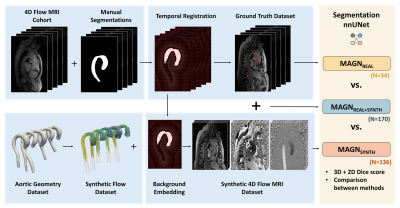 |
Computer Number: 5
3506. Synthetically
trained convolutional neural network vessel segmentation for 4D
Flow MRI
G. Wolkerstorfer, P. Dirix, S. Buoso, S. Kozerke
University Zurich and ETH Zurich, Zurich, Switzerland
Impact: This work demonstrates the advantages of
synthetic datasets for training neural network segmentation
of aortic vessels. The generated data and trained models
will be made available to promote reproducibility and
segmentation accessibility in the field.
|
|
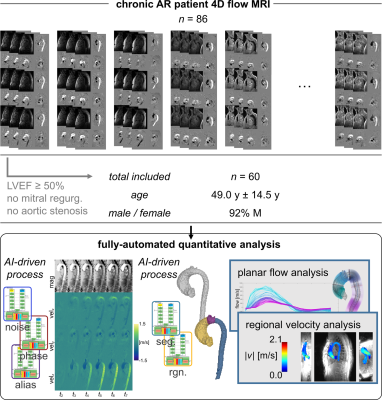 |
Computer Number: 6
3507. Identifying
Optimal Indicators of Severe Aortic Regurgitation from 4D Flow
MRI with Fully-Automated Hemodynamic Analysis
E. Johnson, H. Avgousti, H. Berhane, J. Thomas, B. Allen, M.
Markl, V. Appadurai
Northwestern University, Chicago, United States
Impact: This study offers a template for completely
automated assessment of aortic regurgitation and shows
reverse flow in the proximal descending aorta is most
predictive of aortic regurgitation severity. This may
support standards for clinical evaluation of aortic
regurgitation by CMR.
|
|
 |
Computer Number: 7
3508. Towards
cerebrovascular 5D flow MRI
L. Jacobs, J. Nestmann, D. Giese, S. Kozerke
ETH and University Zurich, Zurich, Switzerland
Impact: We demonstrate the feasibility of
high-resolution cerebrovascular 5D flow MRI of venous flow,
facilitating quantification of respiratory modulation of 3D
velocity fields and derived hemodynamic parameters,
providing a framework for improved understanding of cerebral
flow dynamics.
|
|
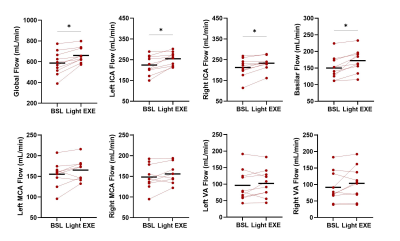 |
Computer Number: 8
3509. Cerebral
blood flow increases during light intensity aerobic exercise: a
4D flow MRI study
M. E. Moir, A. Howery, A. Spahic, Y. Coovadia, A. Corkery,
N. Loggie, S. H. Gaynor-Metzinger, P. Baumhardt, J. C.
Baron, K. Johnson, O. Wieben, J. Barnes
University of Wisconsin-Madison, Madison, United States
Impact: Our findings generated new knowledge regarding
intracranial blood flow during aerobic exercise. Future work
may explore intracranial blood flow during exercise at
various intensities to better understand the optimal
stimulus for increasing cerebral blood flow.
|
|
 |
Computer Number: 9
3510. Impacts
of Pulmonary Regurgitation on Correlations Between Radiomic
Features and Left Ventricular Strains in rTOF Patients
H-Y Chang, J-H Peng, M-T Wu, K-P Weng, T-Y Huang, H-H Peng
National Tsing Hua University, Hsinchu, Taiwan
Impact: Different PR severity had differential impacts
on the correlations between radiomics features and strains.
The integrating radiomics features and CMR indices could
improve the assessment of PR severity and LV strain function
in rTOF patients.
|
|
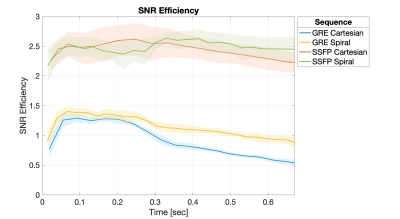 |
Computer Number: 10
3511. SNR-efficient
acquisition strategies for 2D phase contrast CMR at 0.55T
S. Kapai, Y. Tian, K. Nayak
University of Southern California, Los Angeles, United States
Impact: Flow dynamics are comparably captured by all
four sequences. bSSFP PC sequences were more SNR efficient
than GRE counterparts by roughly a factor of two. bSSFP
Spiral acquisitions incurred unresolved flow-related
artifacts.
|
|
 |
Computer Number: 11
3512. Impact
of transcatheter aortic valve replacement on blood flow and
fluid dynamics in the aorta and brachiocephalic artery
K. Yamasaki, S. Tsuneta, M. Kanaya, S. Ishizaka, K. Kamiya,
T. Nagai, T. Anzai, K. Kudo
Hokkaido University Hospital, Sapporo, Japan
Impact: 4D flow MRI revealed changes in blood flow and
fluid dynamics of the AsAo and BCA before and after TAVR. 4D
flow MRI may be a potential tool to comprehensively evaluate
perioperative blood flow dynamics for severe AS.
|
|
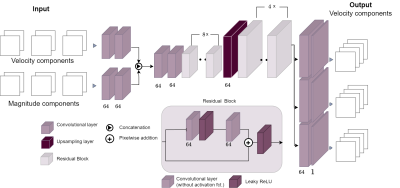 |
Computer Number: 12
3513. Residual
Convolutional Neural Network for Temporal Super-resolution 4D
Flow MRI
P. Callmer, M. Bonini, E. Ferdian, D. Nordsletten, A. Young,
A. Fyrdahl, D. Marlevi
Karolinska Institutet, Stockholm , Sweden
Impact: By showcasing the feasibility of temporal
super-resolution networks, we aim to enhance 4D Flow MRI
data and increase its clinical applicability. Including flow
and hemodynamic parameter analysis in broader clinical
applications has the potential to improve cardiovascular
disease diagnosis.
|
|
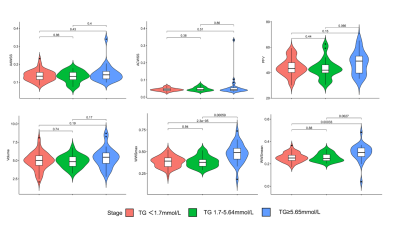 |
Computer Number: 13
3514. Carotid
Atherosclerosis Latency in Hypertriglyceridemic Patients Among
Cardiovascular Low-Risk Individuals Using 4D Flow MRI
W. Wang, S. Fu, Y. Xiang
Guiqian International Hospital, Guiyang, China
Impact: The aim of this study was to provide insights
into the clinical treatment and management of
hypertriglyceridemic haematomas in patients with low
cardiovascular risk.
|
|
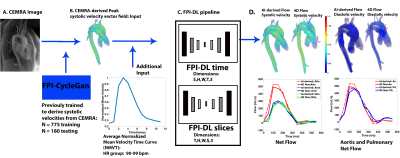 |
Computer Number: 14
3515. Aortic
and Pulmonary 3D Blood Flow Dynamics Derived from Contrast
Enhanced MRA by Fluid-Physics Informed Deep-Learning
H. Berhane, D. Dushfunian, G. Martinez, T. Jacobson, A.
Maroun, J. Baraboo, B. Allen, M. Markl
Northwestern University, Chicago, United States
Impact: CEMRA is a widely available, standard-of-care
test. As such, this technique enables wider access to
complex hemodynamic information in the aorta and pulmonary
arteries that generally requires 4D flow MRI, providing
better overall patient management and assessments from
CEMRA.
|
|
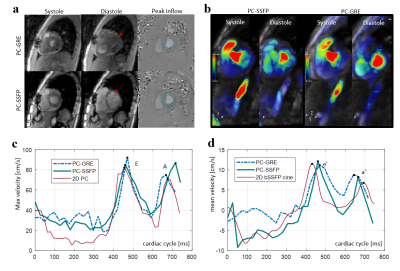 |
Computer Number: 15
3516. 4D
flow with a bSSFP approach
J. Xiang, M. Qiu, G. Galiana, I. Buber, J. Steele, D. Peters
Yale University, New Haven, United States
Impact: A 4D flow PC-SSFP was developed for more robust
diastolic dysfunction evaluations, which estimated mitral
inflow and valve velocity in a single scan, and demonstrated
agreement with 2D measurements and spoiled GRE based 4D
flow, yet improved image quality.
|
|
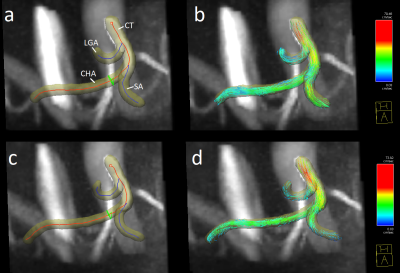 |
Computer Number: 16
3517. Quantifying
Hepatic Arterial Blood Flow with 4D Flow MRI to Improve
Transarterial Radioembolization: a Feasibility and Repeatability
Study
A. van den Brekel, M. Maas, I. Spenkelink, W. van Tilburg,
J. Roosen, D. Giese, N. Jin, J. Fütterer, J. Nijsen
Radboud University Medical Center, Nijmegen, Netherlands
Impact: If hepatic arterial blood flow (HABF)
quantification with 4D flow MRI proves feasible and
repeatable, the technique can be used to investigate the
relationship between HABF and transarterial
radioembolization (TARE) microsphere distribution, with the
ultimate goal of improving TARE outcomes.
|
The International Society for Magnetic Resonance in Medicine is accredited by the Accreditation Council for Continuing Medical Education to provide continuing medical education for physicians.